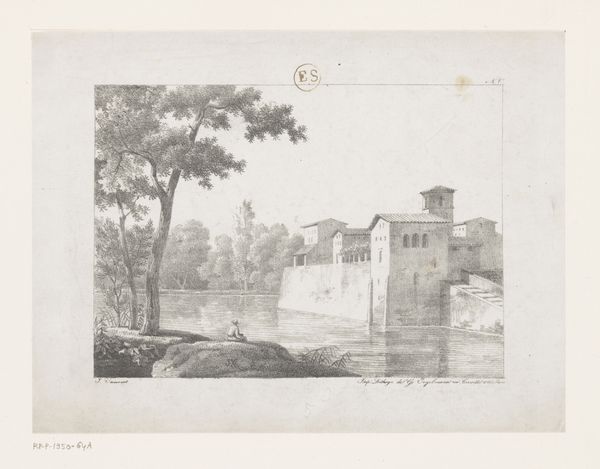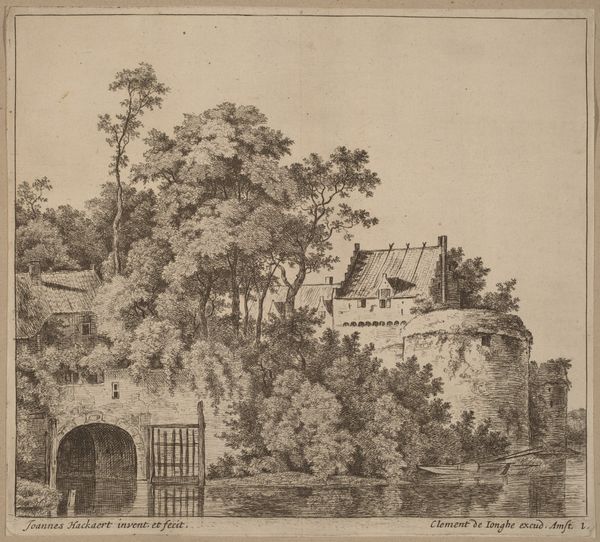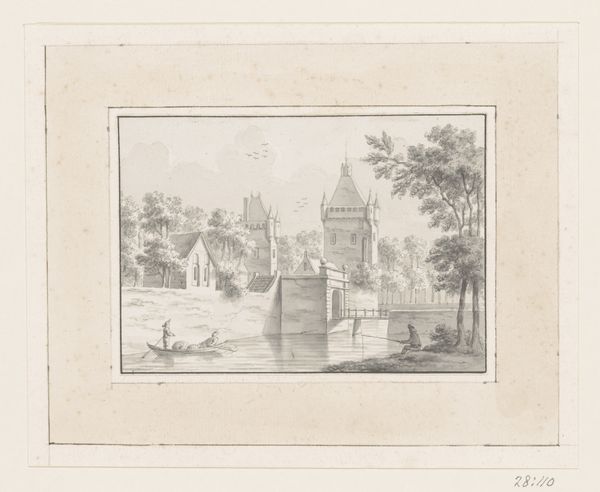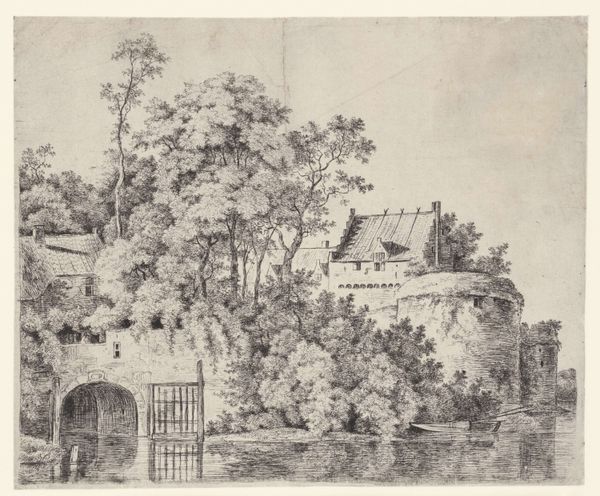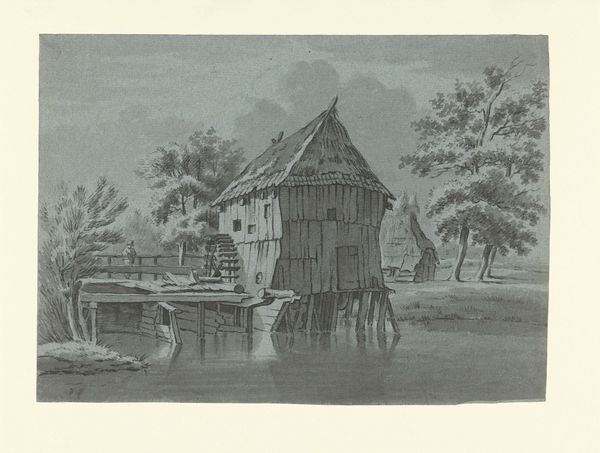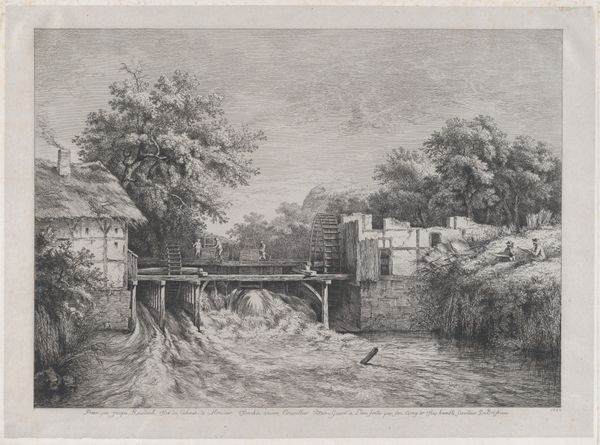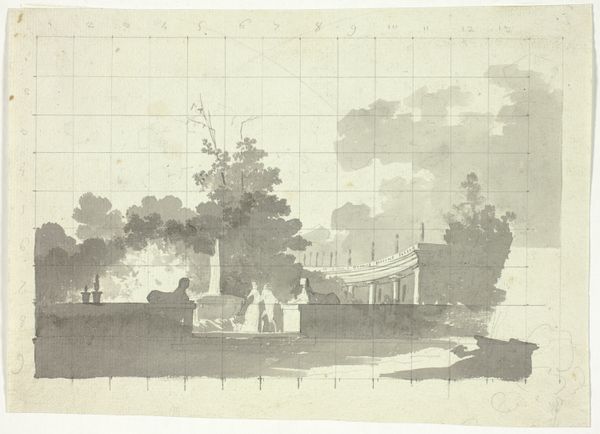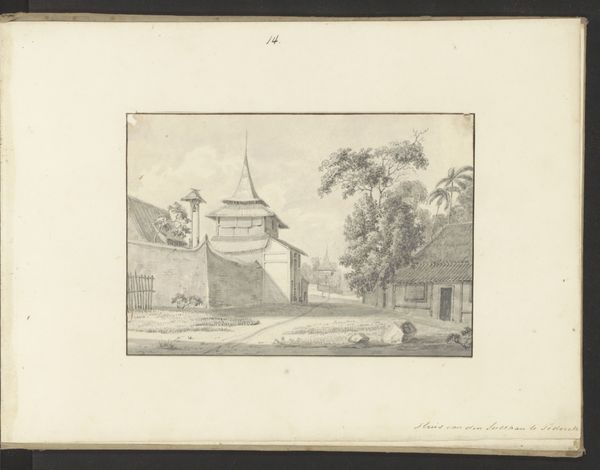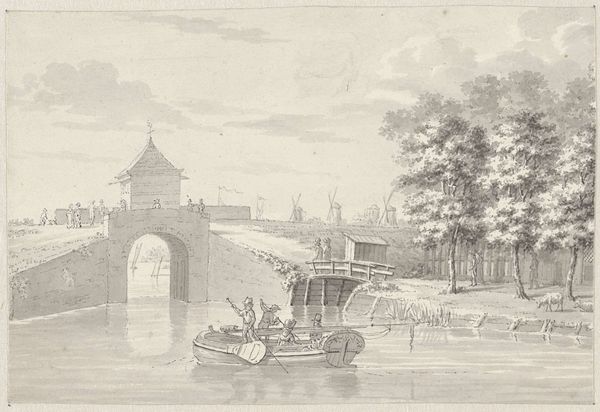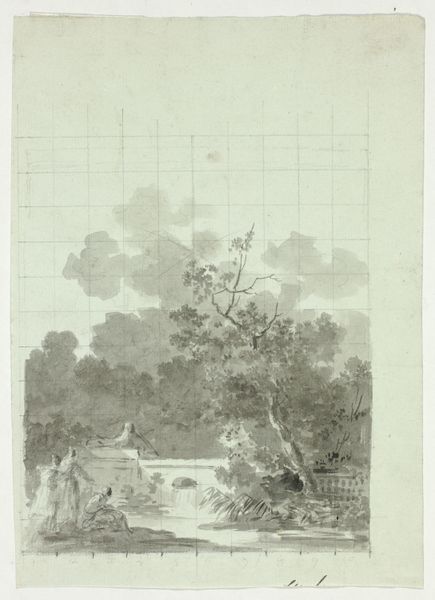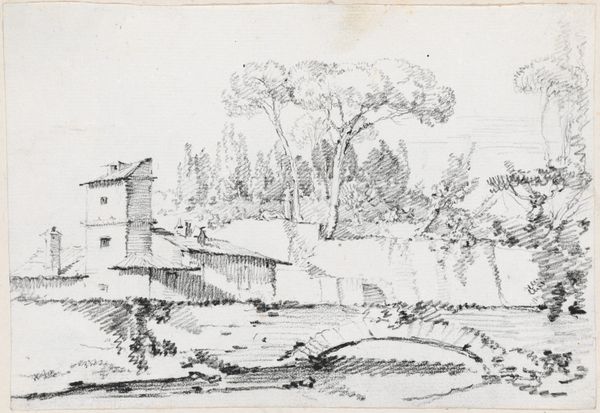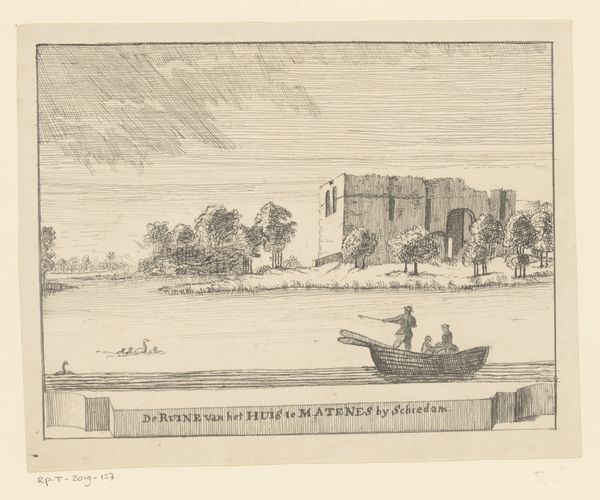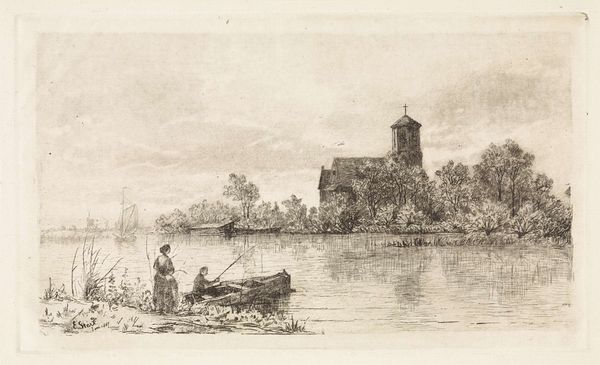
drawing, print, etching, engraving
#
drawing
#
dutch-golden-age
# print
#
etching
#
landscape
#
etching
#
cityscape
#
engraving
Dimensions: height 320 mm, width 485 mm
Copyright: Rijks Museum: Open Domain
Curator: This piece, "Beulstoren in Dordrecht," an etching and engraving by Carel Frederik (II) Bendorp, made around 1872, presents a compelling slice of Dutch cityscape. Editor: My first impression? A feeling of stillness, like time holding its breath. The delicate lines almost whisper; it's incredibly detailed, yet possesses a gentle calm. The texture of the foliage feels soft and feathery. Curator: Absolutely. Bendorp captured a place steeped in history, the Beulstoren tower. Its significance lies in the complex history of Dutch city fortifications, as cities began integrating picturesque elements like this into their defenses, rather than strictly adhering to brutal functionality. Editor: It makes me wonder what that water was like back then, moving through the city... or if someone sat in the tower writing poetry. Can you imagine, writing with ink and watching swans drift by in what must have felt like forever? Curator: It is true the Beulstoren had evolved by the late 19th century into a quaint visual asset rather than a strategic defensive post. Prints like these catered to a burgeoning middle class eager to own depictions of Dutch heritage, so they’re an important sign of an emerging artistic and cultural market in the Netherlands. Editor: That makes sense. It almost feels too peaceful for any real battles. Look at those trees, framing everything with their soft leaves. It's nostalgic, almost romantic. I love how this almost monochromatic print seems like a living drawing more so than it reads like a black-and-white landscape painting. Curator: Exactly. By converting grand public architecture into smaller, consumable images for the middle classes, artists helped forge a cohesive national identity, even selling those as postcards, if you can believe it! Editor: So much more than just a pretty picture. History lessons hiding in plain sight, that only require a thoughtful look to unpack! Curator: Indeed. Bendorp provides a portal through which we consider not only the structure of Dordrecht but the mechanisms of cultural memory itself.
Comments
No comments
Be the first to comment and join the conversation on the ultimate creative platform.
